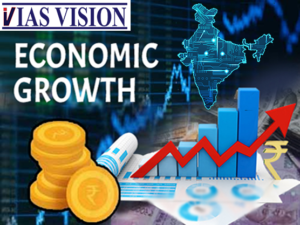Economic Reforms in India 1991
Bckground and IMF Bailout
Background of Economic Reforms in India 1991
Economic Reforms in India 1991:
Years of socialist policies like widespread industrial control through the license raj, Monopolies and Restrictive Trade Practices Act (MRTP) of 1969, nationalization of banks and other industries, tight control over privately produced products, obstruction to foreign investment into the country, overvaluation of currency and an inward-looking trade strategy had weakened the economic fundamentals of the country.
- Macroeconomic problems were clearly visible from 1971 onwards when acute shortage of foreign exchange(FOREX) led to the passing of foreign exchange regulations act, 1973, high taxes were leading to a big underground or black economy, which led government to announce demonetization in 1978 & Tax amnesty to those who disclose black money. Eight tax amnesty schemes were announced till 1991.
- 1971 oil shock and resulting unrest and emergency proved that people were in economic stress and government does not have capacity to absorb any external shocks like the oil crisis of early 1970’s.
- Even at pegged and RBI controlled exchange rate Indian rupee depreciated from 1US$ - 3.30 in 1947 to 1US$ - 26.30 in july 1991 – a fall of 700%.
- Large amount of loan write offs for farmers in consecutive elections made banks unhealthy and sick.
- Till 1985 GDP growth rate failed to cross 4% growth rate, thereby earning the epithet “Hindu rate of growth”.
- By 1991, against a total foreign debt of $72US billion dollars, india’s Forex reserves of US$1.2 billion dollars were good enough to fund imports for 21 days.
- From 1989 onwards the coalition government were increasingly profligate & expanded subsidies on fertiliser, bank loans, fuel and food. The current account deficit ballooned. India entered 1991 with a bloated current account deficit and a massive 12 percent fiscal deficit.
In 1985 to achieve fast economic growth, govt. Adhered to ill adviced suggestion of liberalizing imports, without planning for the balance of payment crisis it can create.
3 unstable coalition governments in 3 years, led by 3 different prime ministers created a situation of indecision & uncertainity.

Global issues in 1991
External scenario:
- Iraq-kuwait war of 1991 & the oil price rise made indian crisis even more difficult.
- End of cold war led to push for fast globalization led to new trade possibilities.
- Back home, Kashmir problem raised its head after the withdrawal of Soviet Union from Afghanistan.
In the fall of 1991, the govt. of prime minister Chandrasekhar mortgaged 20 tonnes of gold largely belonging to RBI to raise US$234 million and again 47 tonnes to raise US400million. These mortgages were carried out at bank of England and the bank of Switzerland.
IMF programme and after
The IMF Programme: With nowhere to go, sovereign default looming, gold mortgage option already exhausted, IMF was the only go to option. Prior to this india had approached IMF 4 times with differing levels of bailouts. In all the previous periods the advice tendered by IMF to open up the economy was refused by hard nosed Indian politicians who did not want a political and ideological shift from non-alignment & pro soviet union stance to the US axis – even in face of intense human suffering. Collapse of the soviet Bloc & arrival of new age politicians along with the lack of choices made it easier.
In July, 1991, India received $220 million - emergency loan from IMF.
This loan was different from previous loans taken at 5 different times.
- Since independence, india had taken assistance from IMF & world bank but avoided the necessary market reforms these institutions advocated so often to transform the economy.
- In taking the current loan, India finally – after decades of dilly dallying & refusal – conceded to the crux of the argument that economy cannot afford continued profligacy, thereby committing to broad based & wide ranging reforms, deregulation (production, export &investment), and an opening of the economy both internal and externally.
- India did not go the full length of the IMF bailout programme as it required further & forced economic reforms, which India with its coalition governments was not willing to go for.
- By deft fiscal management govt. managed the need for further bailout support & all IMF loans were paid off by the year 2000, even the mortgaged loan was brought back.
### a large part of Indian reluctance to adhere to IMF & world bank advice was because of failed bailout programmes in latin America particularly, Argentina.
Results of 1991 reforms:
A large part of the macroeconomic problem of 1991, was because of overvalued rupee. Till 1993, the exchange rate of the Indian rupee was fixed by Government. Since March 1, 1993, a new system of exchange rate determination has been introduced. This is known as the unified exchange rate system or UERS. Under this system, all payments and receipts of foreign exchange are converted in rupees at market rate of exchange. Further, Union Budget for 1994-95 introduced full convertibility on current account that makes many trade transactions relatively free of controls.
